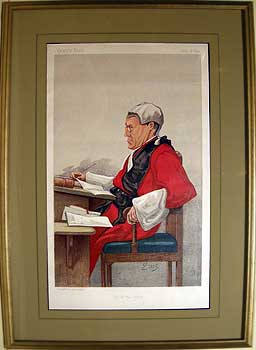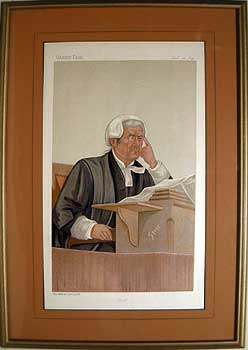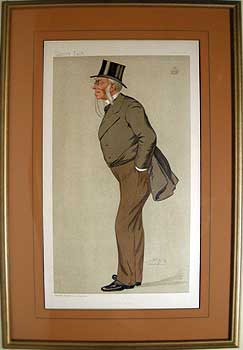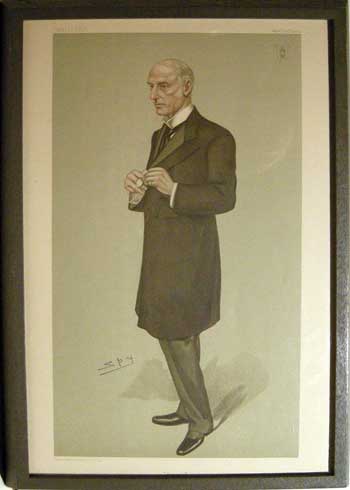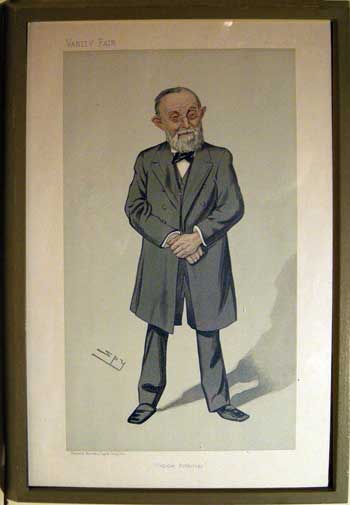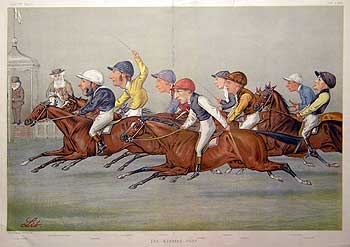THE VANITY FAIR CARTOONS
Vanity Fair was founded in 1868 by Thomas Gibson Bowles, the natural son of Thomas Milner Gibson, a prominent liberal politician, whose wife (Susannah) Arethusa held regular fashionable salons. It was in this environment that the young Bowles had the opportunity to mix with newspaper men, politicians, actors, authors, bohemians and artists. In 1865 he was introduced to professional journalism by Algernon Borthwick, later Lord Glenesk, then editor of the Morning Post. Bowles' wrote for the Tomahawk, a primarily a satirical publication and its success as a rival to Punch resulted from the ‘daring and originality’ of its full-page cartoons. Financial complications led to its closure in 1870, but Bowles was able to combine the merits of this paper and his advantageous social connections to create his own publication. The decision to publish in quarto dimensions with eight to ten pages per issue gave Vanity Fair an instant identity and set it apart from other satirical magazines.
The first edition was published on 7 November 1868 –Bowles maintained tight control of the operation. He wrote much of the text himself under the pseudonym ‘Jehu Junior’, and engaged regular contributors instead of members of staff. These individuals were selected from fashionable sets for their social as much as their literary qualifications. Indeed, Vanity Fair was a journal written by and for the Victorian and Edwardian Establishment, a magazine for those ‘in the know’.
On 16 January 1869, Bowles promised his readers ‘Some Pictorial Wares of an entirely novel character’ and two weeks later appeared a full-page caricature of Benjamin Disraeli by Carlo Pellegrini, using the pseudonym ‘Singe’ (shortly afterwards anglicized to ‘Ape’). It was reproduced by Vincent Brooks – an expensive and highly regarded lithographer. This was the first of over 2,300 caricatures to be published by Vanity Fair.
At this date, colour lithography combined with portrait caricature was unprecedented in England. Vanity Fair’s illustrations, instantly recognizable in terms of style and size, led to a rapid increase in demand for the magazine. It gradually became a mark of honour to be the ‘victim’ of one of its numerous caricaturists. Bowles’s witty accompanying texts, full of insights and innuendoes, certainly contributed towards the popularity of these images.

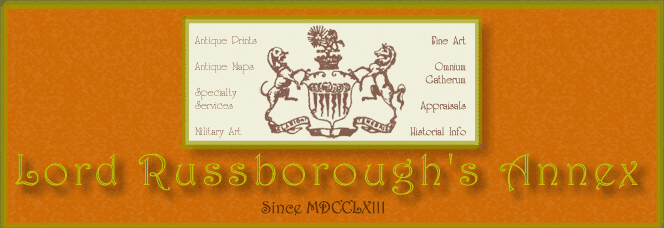
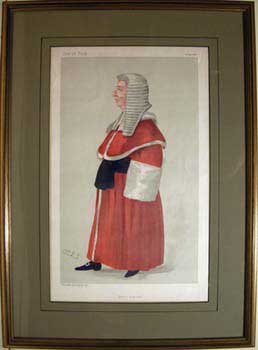
mod.jpg)
